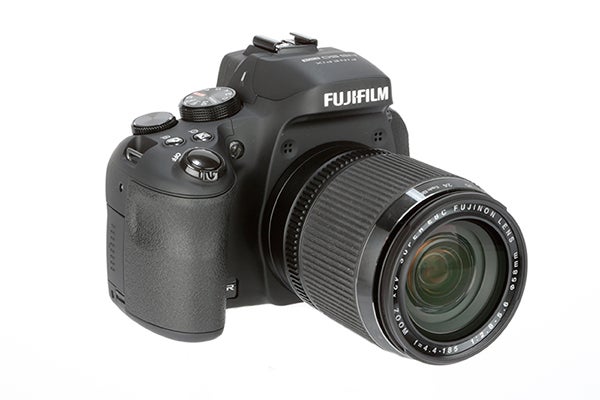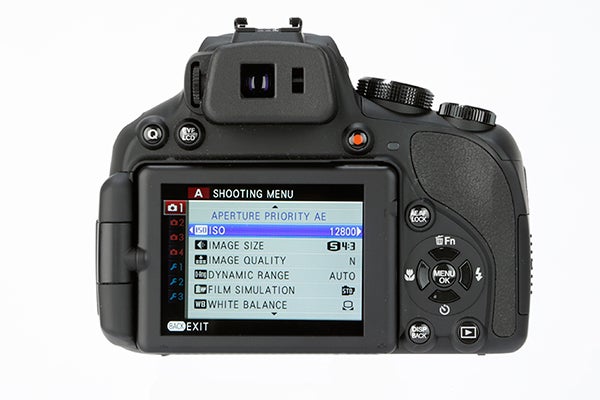Fujifilm HS50 EXR Review - Performance, Image Quality & Verdict Review
Performance, Image Quality & Verdict
A great 42x zoom bridge camera with DSLR-style handling

Sections
- Page 1 Fujifilm HS50 EXR Review
- Page 2 Performance, Image Quality & Verdict Review
Fujifilm HS50 EXR – Performance
Although the camera’s 11fps burst mode is restricted to just six frames, the good news is that write speeds are generally prompt. There’s little or no slowdown when capturing JPEG files in quick succession, and the HS50 EXR only really begins to slow after seven or eight Raw and JPEG files.
Shot to shot speed is also particularly impressive, generally matching the claimed rate of just half a second, while shutter lag is virtually non-existent. The HS50 EXR’s focusing speed is virtually instant, too, especially at the wide end of the focal range, and even at the tele end it still offers breakneck speed.
It’s also worth nothing that the focusing drive is very quiet; a useful feature where discreet shooting is required.

The Fujifilm HS50 EXR’s LCD screen performs well. It only really falters in particularly bright conditions, while the vari-angle hinge is useful for taking shots at awkward angles.
In bright conditions it’s a good idea to switch to the HS50 EXR’s viewfinder, and this isn’t an issue as the viewfinder is arguably the camera’s best feature. The unit is large, bright and offers a detailed enough image for manual focusing even at longer focal lengths.
On the whole there’s very little that lets the camera down with the exception of the slightly sluggish menu system, which isn’t a serious cause for alarm.

Click image for gallery of full resolution test shots
Fujifilm HS50 EXR – Image Quality
The Auto White Balance system is solid, producing colours that are lifelike and realistic. It errs on the cool side at times, but it’s easily remedied using the white balance shift function.
There’s a slight air of unreliability in the metering system, too. It’s generally sound, but there are times when it underexposes, in particular when faced with large areas of highlights. The good news is that this is also relatively easily remedied through exposure compensation where needed.

Click image for gallery of full resolution test shots
One of the benefits of the model’s larger sensor is that the HS50 EXR should handle noise more capably than some competing bridge cameras, and on the whole this is true. Noise is controlled well throughout the ISO range, and although there is some loss of detail at higher settings due to noise reduction, this is somewhat to be expected.
Photo quality, despite a couple of niggles, is very good, but the same can’t be said for videos. Videos suffer from both a lack of detail and poor image quality, while the HS50 EXR’s manual zoom control is also far from ideal when shooting video.
Verdict
There a lot to like about the HS50 EXR. Not only is it one of the best-specified superzoom bridge cameras on the market, but it also has the performance to match. It has an excellent viewfinder, lightning-quick focusing system and truly ergonomic design, and is only really let down by poor video quality and a few usability issues. Although it’s far from the smallest and lightest superzoom bridge camera available, at its current price it’s certainly one of the best on the market.
Trusted Score
Score in detail
-
Value 9
-
Design 9
-
Features 9
-
Image Quality 8

